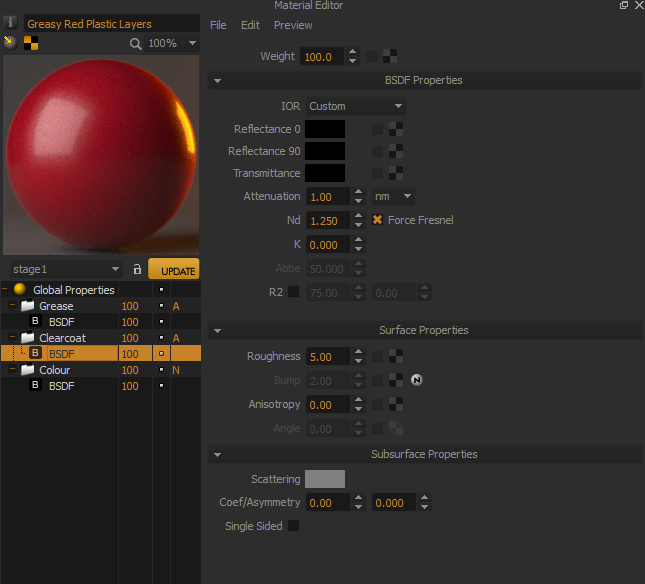- Tue Sep 16, 2014 10:11 pm
#383054
Perhaps this example will make things clearer, as to what Force fresnel does at low roughness values:

Check the refl 0/90 colors in both examples. Now it's weird that there is no difference in the material isn't it? Well it isn't because with force fresnel on, the brightness, or value if you prefer, of the color you have set has no influence at all at low roughness values. It is only the chroma that can change the look of your material, but again, that won't change how reflective the surface is. That will only change its tint, to a certain degree when roughness is low. The reflectivity is entirely controlled by the nD, while FF is on and the roughness is low. As the roughness increases, even with FF on, THEN your refl colors start to matter again.

Check the refl 0/90 colors in both examples. Now it's weird that there is no difference in the material isn't it? Well it isn't because with force fresnel on, the brightness, or value if you prefer, of the color you have set has no influence at all at low roughness values. It is only the chroma that can change the look of your material, but again, that won't change how reflective the surface is. That will only change its tint, to a certain degree when roughness is low. The reflectivity is entirely controlled by the nD, while FF is on and the roughness is low. As the roughness increases, even with FF on, THEN your refl colors start to matter again.
Maxwellzone.com - tutorials, training and other goodies related to Maxwell Render
Youtube Maxwell channel
Youtube Maxwell channel






 - By Mark Bell
- By Mark Bell